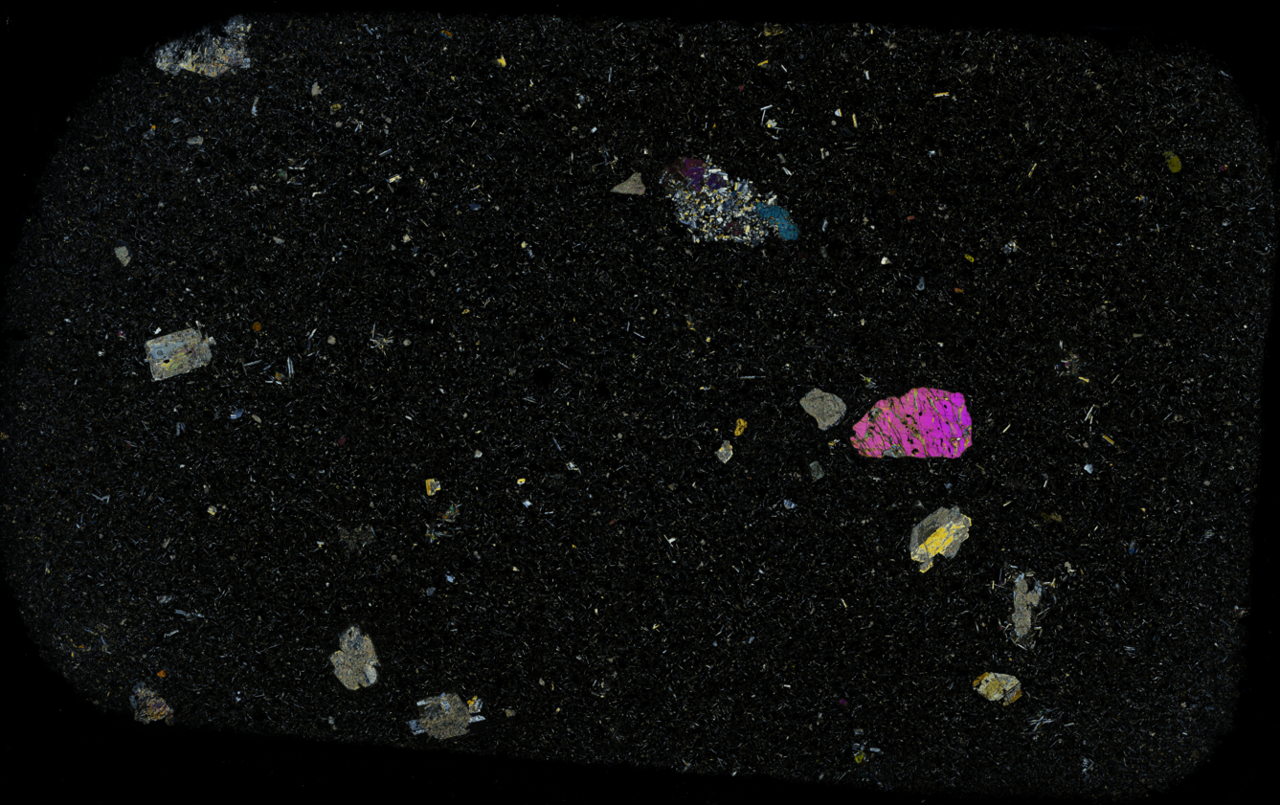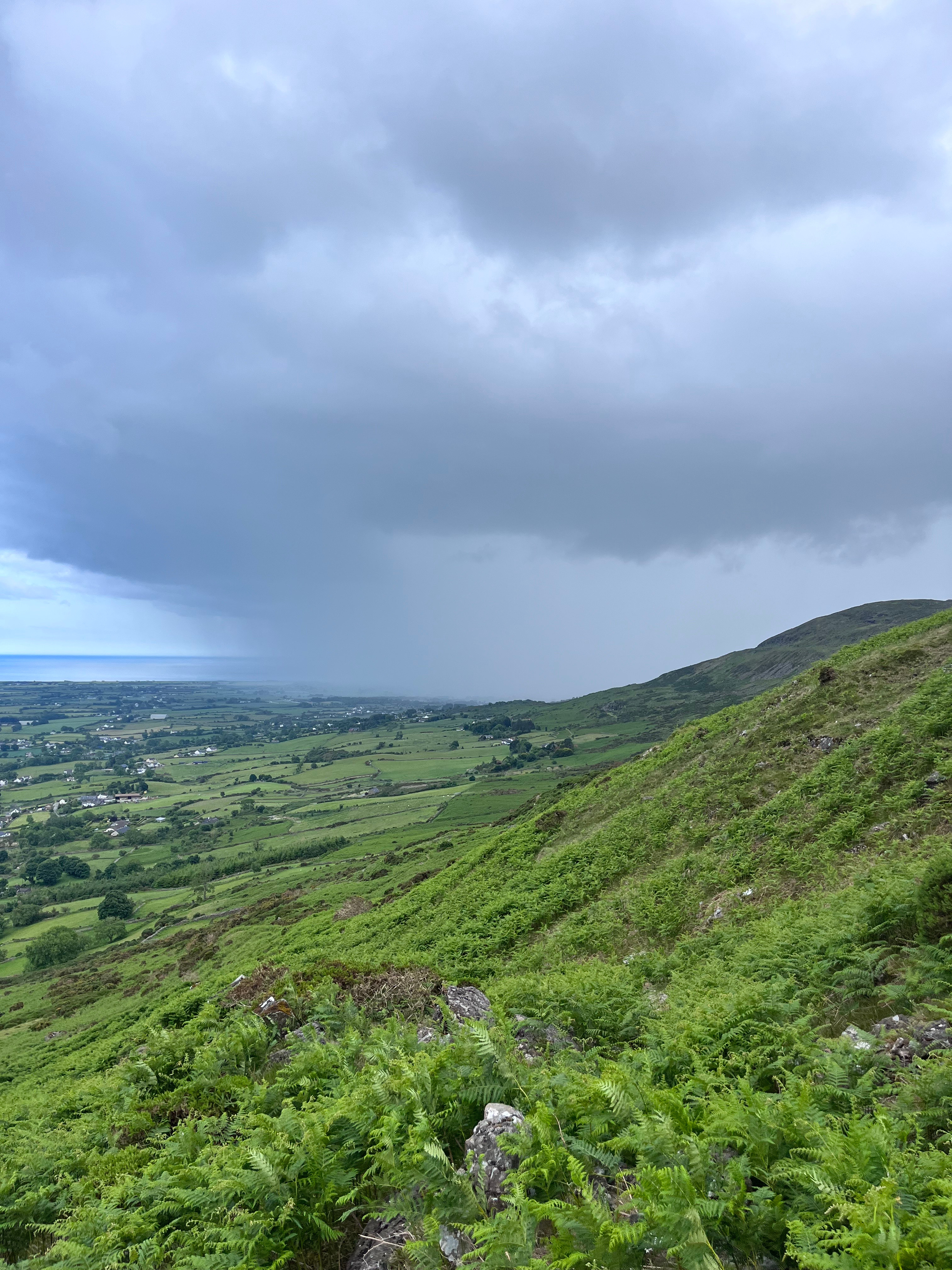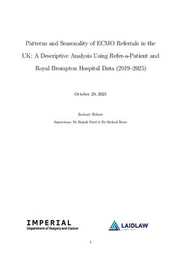The course of research never does run smoothy!

It is safe to say that this has been the most stressful and chaotic summer of my life, and I wouldn’t have it any other way!
I set out on my first day of field work full of nervous excitement. I had done all the reading I could on vent agglomerates and the Carlingford Igneous Complex, determined not to be a complete novice next to my supervisor, his PhD student Jack and the Chief Geologist of Northern Ireland. I was amongst what I can only describe as the MVPs of the Carlingford Igneous Complex. We set off on our merry way up to Slievenaglogh, the one outcropping of the vent agglomerate rocks we needed for this project, day one was going to be sample collection and day two was going to be spent counting and characterizing the different rocks in the vent agglomerate itself. Having already gone up the wrong path and been given directions by a local, we headed up the road towards the proper public path only to be pulled up by a man in his van. Expecting another friendly local ensuring we were not lost you can imagine the shock on our faces when the man told us if we headed up the mountain he would ‘get’ us with his rifle. Dr. Cooper tried to explain we’re simply researchers from Trinity, but this man didn’t care and apparently whoever we were we’d be dead if he saw us up there at any point. Not the best start to field work by anyone’s standards. Walking back to the car utterly deflated I thought how on earth this project could be salvaged. I need not have worried, before we had even gotten back to the car my supervisor had come up with an alternative project with pretty much the same objectives that would show us what the vent agglomerate was going to.
Having bucked ourselves up with a cup of tea in a local pub to get over the shock we commenced our first day finding and sampling the cone sheets around Carlingford. After the first day Jack and I were on our own for day two. Well rested after staying a BnB run by the friendliest old man I have ever met yet could not for the life of me understand, we headed off to the tidal flats outside Carlingford town. Day two was much smoother than day one despite an hour long walk down a beach to find apparently non-existent cone sheets. A very staggered walk up the Northeast slope of Slieve Foye thanks to a severe chest infection on my part gave us the last of the samples we needed just as a torrential rain shower came up from the South. Returning to the car sodden and laden with rocks we patted ourselves on the back for a successful field trip despite the slightly traumatizing start.

The following Monday was the official start of my Laidlaw project. It began with me hauling 20kgs of rocks onto Dublin Bus and across campus to the Museum Building which houses the geology department. I was given a desk in the postgraduate office and set out sorting all my samples and making sure they were labelled correctly. And thus began four weeks of sample preparation. Two weeks were spent in what the department affectionately calls the ‘crushing dungeon’ – an accurate moniker I must say. The following two weeks were spent in the ESRL quite literally melting the powdered rock into little glass disks called fused beads. As if the universe was saying ‘sorry for messing everything up at the start there’ all my sample prep was miraculously finished in time for the days we had booked for microscopy analysis, which apparently never happens as the postgrads so often liked to remind me. Learning how to use the Scanning Electron Microscope and the Optical Microscope to take images of my thin sectioned samples was very intimidating at first but turned out to be incredibly fun, I have one of the images I took on the optical microscope as my screensaver on my laptop and as the cover photo of this post (shoutout sample 22CCCI-07-09)!
The real highlight of the entire research project was getting to travel to Oxford University to use the Electron Probe Microanalyzer for the last three days of my project. I was in complete awe of Oxford from the second I arrived, this rapture was only heightened when we found out the accommodation with Christ College we had booked included free breakfasts in the Great Hall every morning (said hall was a filming location for Harry Potter!). Despite the UK being in a heatwave with temperatures over 35°C, we were in hoodies and jackets in the lab, after a few hours in the basement and its air conditioning we soon forgot that everyone else was melting, only to emerge like mole people squinting into the light at lunchtime. Our last day was spent in the lab, and in the Natural History Museum in Oxford, taking a break from looking at rocks..... to look at rocks. It really was the icing on the cake of a summer of learning and fun.

This project has been the best thing I have ever undertaken despite its ups and downs. I have learned that yes, I am capable of the things I always wanted to do. Things most certainly don’t always go right, its almost a rule in research, but that doesn’t mean it’s the end of the road. Being able to get up and dust yourself off is something I feel every researcher and leader must be able to do.





Please sign in
If you are a registered user on Laidlaw Scholars Network, please sign in